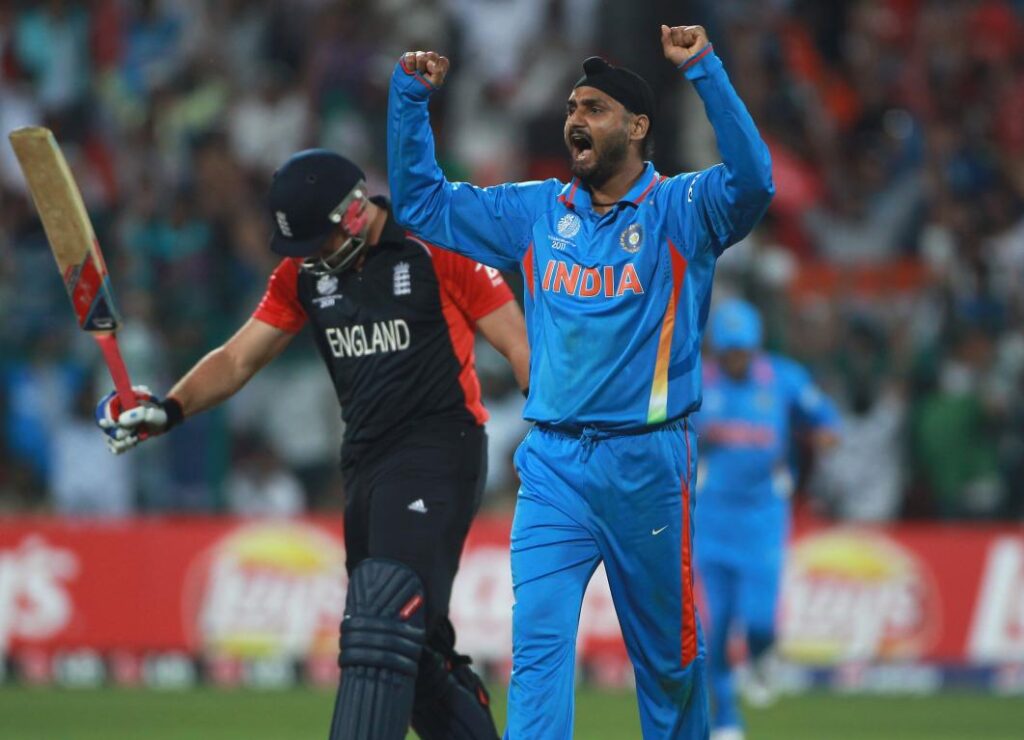
Introduction: When Cricket Meets Injury
Cricket fans across India know Harbhajan Singh as one of the most skillful spin bowlers in the game’s history.
His incredible ability to turn the ball and outsmart batsmen made him a national hero. But like many sports icons, Harbhajan’s career faced a major challenge—a finger injury that threatened his performance. Instead of immediately opting for surgery,
Harbhajan chose a different path: physiotherapy. His recovery story is not just inspiring but
also a powerful example of how sports physiotherapy in India can help athletes bounce
back without going under the knife.
When Did the Injury Happen?
Harbhajan Singh’s finger injury occurred in mid-2003, shortly after the Cricket World Cup.
Medical experts recommended immediate surgery in June 2003, but Harbhajan opted for
physiotherapy to regain strength and delay any surgical intervention. This decision allowed
him to continue playing cricket during that period.
However, the injury gradually worsened, and by December 2003, surgery became
unavoidable. He underwent the procedure and spent around five months in recovery before
making his comeback.
Injury & Recovery Timeline – Harbhajan Singh
| Event | Date |
|---|---|
| Finger injury noticed | Early–Mid 2003 |
| Surgery recommended | June 2003 |
| Physiotherapy chosen | Mid-2003 |
| Surgery eventually performed | December 2003 |
| Estimated recovery period | 4–5 months |
Understanding Harbhajan Singh’s Injury
For a spin bowler, the fingers are everything. Harbhajan’s injury to his spinning finger made
gripping and spinning the ball painful, directly affecting his match performance. A surgical
approach could have meant months away from cricket, potential changes in bowling style,
and long-term risk. That’s when physiotherapy for finger injury became the preferred
option.
Why Physiotherapy Over Surgery?
Harbhajan’s case shows that surgery is not always the first or best option for sports injuries.
Physiotherapy provides a non-invasive, targeted, and personalised recovery plan. It
helps athletes like Harbhajan restore:
● Mobility – Regaining pain-free finger movement
● Strength – Restoring grip power
● Coordination – Ensuring bowling action stays consistent
● Confidence – Returning to competitive play without fear of reinjury
Physiotherapy for Sports Injuries in India
In recent years, physiotherapy for sports injuries in India has advanced tremendously.
From professional cricketers to weekend football players, rehabilitation is now guided by:
● Sports-specific treatment plans
● Advanced equipment for strength and recovery
● Injury prevention strategies to avoid future setbacks
Athletes often choose sports physiotherapy in Bangalore because the city has become a
hub for top physiotherapists, advanced rehab technology, and experienced sports
injury specialists.
Harbhajan’s Physiotherapy Journey
Harbhajan’s rehab focused on:
-
- Pain Management – Using manual therapy and targeted modalities to reduce
inflammation
- Pain Management – Using manual therapy and targeted modalities to reduce
-
- Strength Training – Improving grip strength and finger endurance
-
- Functional Drills – Practising bowling movements without pain
-
- Gradual Return to Play – Increasing intensity step-by-step until he could compete at
full strength
- Gradual Return to Play – Increasing intensity step-by-step until he could compete at
Physiotherapy Clinics in Bangalore – A Growing Sports Hub
Many physiotherapy clinics in Bangalore now cater specifically to athletes. These centres
offer:
● State-of-the-art sports injury rehab in Bangalore
● Customised physiotherapy for cricket injury recovery
● Preventive physiotherapy programs for players
For young athletes and aspiring cricketers, getting the right rehab early can make the
difference between returning to the game or being sidelined for good.
How Physiotherapy Prevents Future Injuries
Harbhajan’s story isn’t just about healing—it’s about prevention. With proper physiotherapy:
● Muscles and joints become more resilient
● Players learn proper movement patterns to reduce strain
● Regular assessments help catch problems early
This approach has made physiotherapy in Bangalore a go-to solution for many
professional and amateur sports players.
Avoiding Surgery With Physiotherapy Success Stories
Harbhajan Singh’s case is one of many physiotherapy success stories in India. From
badminton players to marathon runners, physiotherapy has helped countless athletes
recover from serious injuries without surgery.
Key reasons physiotherapy works:
● Non-invasive
● Faster recovery timelines
● No surgical risks
● Focus on overall fitness and mobility
Why Choose Physiotherapy in Bangalore for Sports Injuries?
Bangalore offers:
● Expert physiotherapists with sports specialization
● Access to advanced rehab tools like shockwave therapy, laser therapy, and sports
taping
● Holistic recovery programs combining strength, flexibility, and conditioning
For cricketers or anyone with a finger injury, the best physiotherapist in Bangalore can
tailor a plan that works for your specific sport and injury.
BSI Physiotherapy – Supporting Athletes from Injury to Performance
At BSI Physiotherapy, our sports rehab team follows the same principles that helped
Harbhajan Singh recover:
● Comprehensive injury assessment
● Individualized recovery plans
● Sports-specific drills for safe return to play
● Preventive care to keep injuries away in the long run
We work with cricket injury physiotherapy programs designed for players at every
level—from local clubs to national tournaments.
FAQs on Physiotherapy for Finger & Sports Injuries
Q: How long does recovery take with physiotherapy for a cricket finger injury?
A: It depends on severity, but most players see improvement within weeks and full return in
a few months.
Q: Is sports physiotherapy in Bangalore only for professionals?
A: No. We treat everyone—from kids in sports academies to recreational athletes.
Q: Can physiotherapy really replace surgery?
A: In many cases like Harbhajan’s, yes. It depends on the injury type and recovery goals.
Conclusion: From Pain to Spin
Harbhajan Singh’s decision to choose physiotherapy over surgery in 2003 was a turning
point in his career. His story is proof that with the right treatment, recovery is not just about
healing—it’s about returning stronger.
If you’re facing a sports injury, remember: early physiotherapy intervention could be the key
to getting you back in the game—just like it did for Harbhajan.
